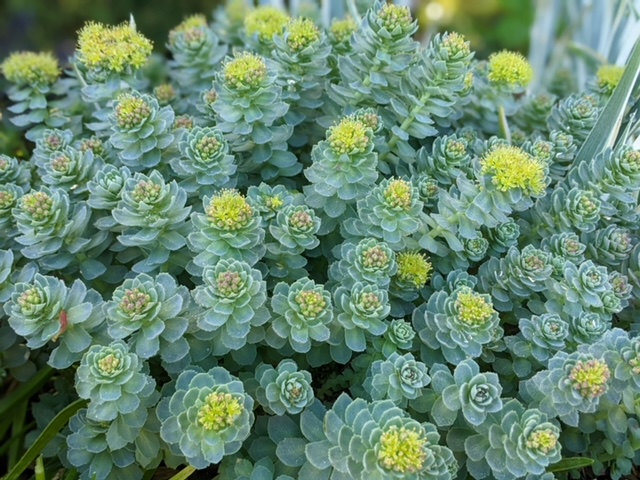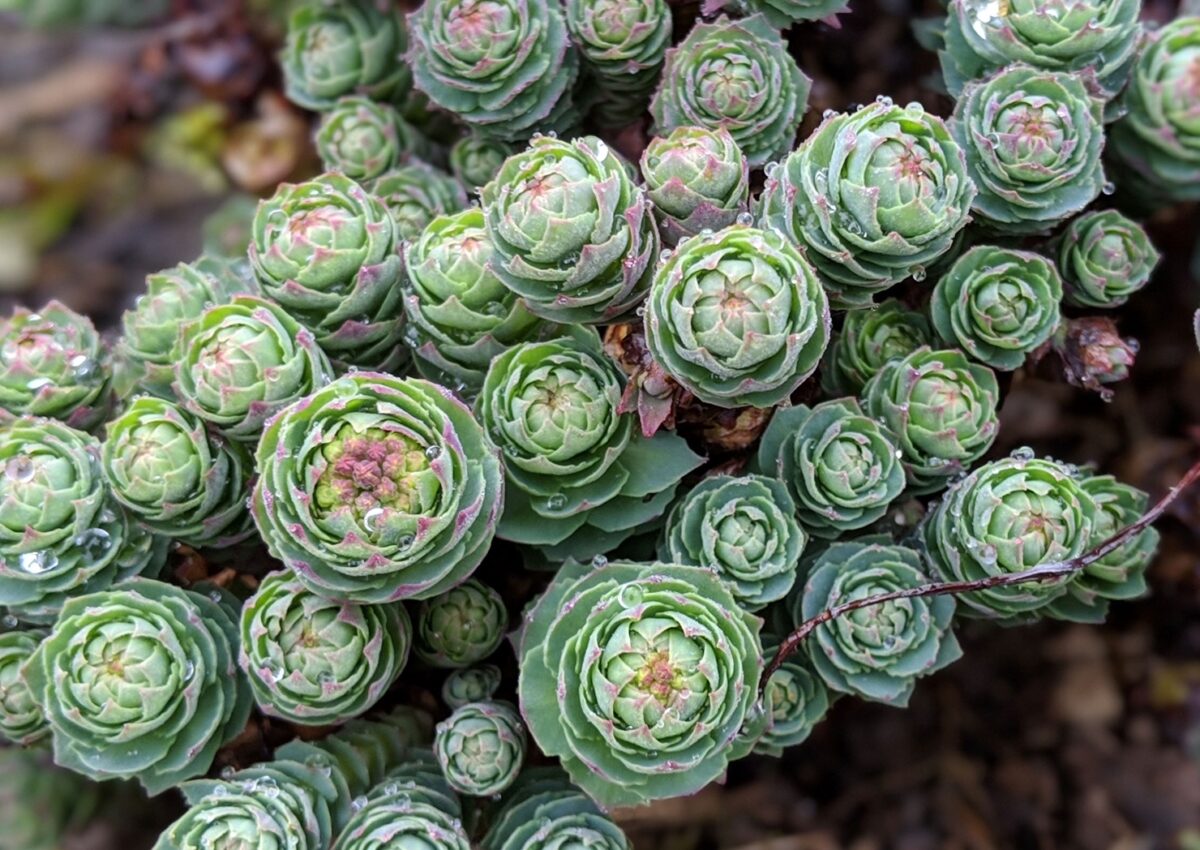Sedum rhodiola
roseroot

During the winter months the knobbly rootstock of this succulent plant looks like nothing on earth, and in January and February I find myself endlessly peering at it trying to spot the first sign of life. It’s a fascinating thing to keep an eye on as spring approaches and sometimes hard to believe that the poor plant will pull through, but we’ve grown the same specimen for at least 20 years and it’s turned out to be as tough as old boots!
It might seem odd to be enthusing about a plant that has yet to reach its peak, but with this one, half the fun is in the anticipation. A clump-forming rhizomatous perennial, it has stout stems and fleshy blue-green leaves tinged with pink at the tips. In summer, the small, yellow, star-shaped flowers are very attractive to pollinators.
Very hardy, drought and disease resistant, it is eaten by neither rabbits, pigeons nor slugs. It is ridiculously easy to propagate, you just tear off a chunk of the root and pot it up in a free-draining compost any time from now on. It does best in full sun but will tolerate partial shade. Height is about 30 cm and it spreads to rather more.
The photograph below was taken last May, as the flowers were just starting to open.

NB Louise has published a beautifully produced book of her plant profiles – A Plant for Each Week of the Year. It costs £9.99 and is for sale in our online shop here.
More NB If you’re not already a subscriber and you’d like a bit more gardening chitchat from the3growbags, please type your email address here and we’ll send you a new post every Saturday morning.

4 replies on “Rhodiola rosea”
I love your weekly chat and golden advice but could not help laughing when , in your list of ways to save on plastic, you show a wooden frame but it has A LOT OF PLASTIC POTS in it??!! So you have not yet totally rid yourselves of these hideous things – neither have I ‘cos whenever one buys a plant, it is ALWAYS in a plastic pot.
I hope we are not fightoing a losing battle. Fight on!
Oh Jane, you are so right – we have all still got dozens and dozens of the things! All we can really do at the moment is keep re-using them as much as we can, and I am certain that the wooden frame in the photo (which belongs to Laura, in fact) contains pots that she has re-cycled for years. So glad you like our ramblings……comments like yours give us the impetus to keep going! All the best, Elaine
Hi Growbags
thank you for addressing the ghastly but useful/reliable plastic issue. I love the wool pots and will look up Atlantic Garden
However a word of caution on open dunking containers for water storage. Fledgling birds will fall into them so they need a cover. I will never forget finding a drowned baby bird in mine-horrible.
Hi Jude, thank you so much for writing in. We are very glad to hear that you like wool pots too – they may not be the full answer but they could certainly be part of it. And thank you for the advice about dipping tanks – finding that baby bird must have been really upsetting – we will add that caveat. All the best, Elaine